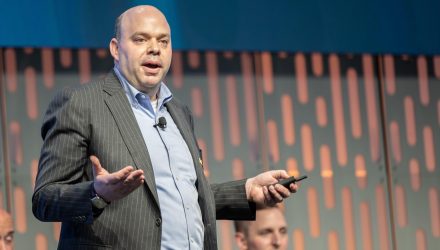“Life moves pretty fast. If you don’t stop and take a look around once in a while, you could miss it.”
– Ferris Bueller’s Day Off
For more than a decade, every month has been a strange, different, and wonderful time to be an ETF nerd sharing my opinions with advisors and the broader investment community.
In March 2022, I spent a lot of time talking about the impact of Russia’s invasion of Ukraine and the geopolitical effects. Single country ETFs like VanEck Russia ETF (RSX) have been halted, and broad emerging markets ETFs like iShares Core MSCI Emerging Markets ETF (IEMG) and Vanguard FTSE Emerging Markets ETF (VWO) had their stakes in Russia essentially zeroed out over a few days.
I could continue talking about these tumultuous times. But instead, I wanted to look farther back and share my ETF origin story.
When I first learned about ETFs in 1999, I was a 24-year old mutual fund analyst – with a full head of hair but far less financial acumen. My job was to interview portfolio managers and summarize their investment styles for a weekly publication. A manager told me how he was buying shares of a few fast-growing companies on the Nasdaq.
In passing, he mentioned there was a relatively new product, called QQQ, that held 100 such stocks in one portfolio, much like a mutual fund, but which traded intraday just like a stock. When I finished the interview, I went on to Yahoo Finance to see what he was talking about. After some digging, I bought a few shares of what is now known as Invesco QQQ Trust (QQQ) and got my first taste of what ETFs offered.
Over the next decade, I switched to a new firm and shifted my focus from analyzing growth mutual funds to providing financial advisors with independent investment recommendations about individual telecom companies. My fundamentally based stock calls were sometimes right and sometimes wrong. Yet, the greatest challenge was patiently convincing investors to take sufficient interest in my narrow slice of the stock market instead of banks, biotechnology, or Internet service providers.
In 2008, when my manager announced at a company town hall that in addition to stock analysis, we’d be building out independent mutual fund and ETF research, I volunteered to be a part of the team. After a couple of years of splitting time between covering quarterly earnings calls and fielding inquiries from reporters and clients about a wide range of ETFs and mutual funds, I wanted a change. I tried to focus on the funds space since that’s where the action was. Even back then, there was a growing need for ETF investor education, given the strong demand and high supply of new products.
There were also a limited number of voices willing to speak openly about the risks and rewards of ETFs, so I found a niche and made friends with like-minded ETF nerds across the industry. Little did I know that there would soon be $7 trillion of assets spread across a universe of nearly 3,000 U.S.-listed ETFs and ETNs.
“ETFs have earned their spot as the product structure of choice for many investors, but there’s still plenty of room for growth in the industry,” Janel Jackson, head of ETF capital markets at Vanguard Group, recently told me. “ETFs offer low-cost, broadly diversified and tax-efficient market exposure, and the ETF ecosystem has time and again proven resilient through periods of heightened market volatility.”
Indeed, despite an early 2022 correction in the stock market and the negative impact of rising interest rates on bond funds, Vanguard gathered an industry-leading $64 billion of net inflows year-to-date through March 11. Vanguard S&P 500 Index ETF (VOO) and Vanguard Total International Bond Market ETF (BNDX) were among the firm’s more popular products.
“As the ETF industry continues to evolve and the network of users grows, the core tenants of simplicity, transparency, and flexibility remain central, explained John Hoffman, head of Americas, ETFs & Index Strategies at Invesco. “Using these as a guide, the industry will continue to empower all investors with increasingly precise and intelligent exposure. This is at the core of how we will further enable better capital allocation and ultimately better client outcomes.”
Invesco Optimum Yield Diversified Commodity Strategy No K-1 ETF (PDBC), Invesco S&P 500 Equal Weight ETF (RSP), and Invesco S&P Emerging Markets Low Volatility ETF (EELV) were among ETFs from Invesco with the highest net inflows to start 2022, highlighting the range of its products.
Today, over 100,000 advisors visit ETF Trends and ETF Database websites monthly to stay on top of the ETF market and learn about the wide range of compelling products available through research, videos, and webcasts. Over the last few years, I was honored to publish periodic third-party insights to ETF Trends and ETF Database.
Effective today, I’m very excited to join this growing team of dedicated thought leaders who have digitally connected the investing community for years through an ETF-centric, data-driven platform. I hope you will return to this site to read my regular commentary and directly hear from me on a range of ETF topics. Because as thankful as I am to have had the origin story I did, I’m even more excited about what comes next.
To subscribe to Todd’s research, reports and commentary on a regular basis, please subscribe here.
For more market trends, visit ETF Trends.
